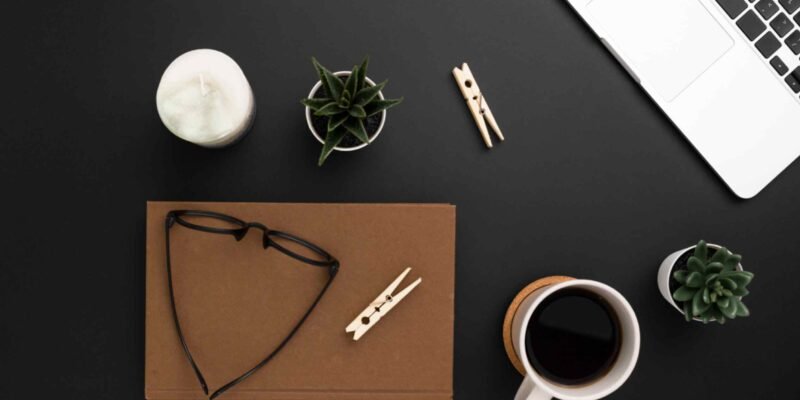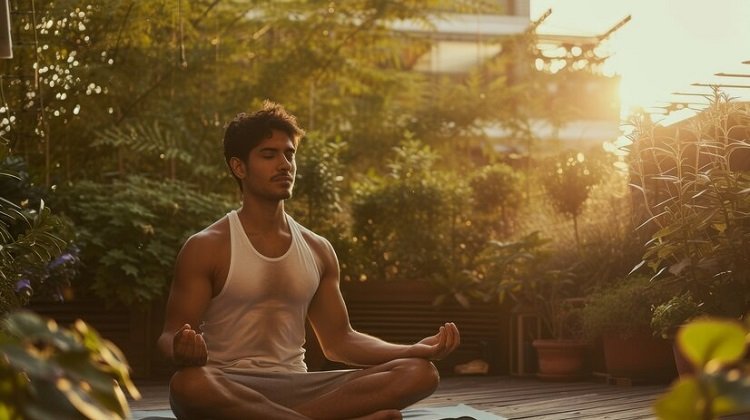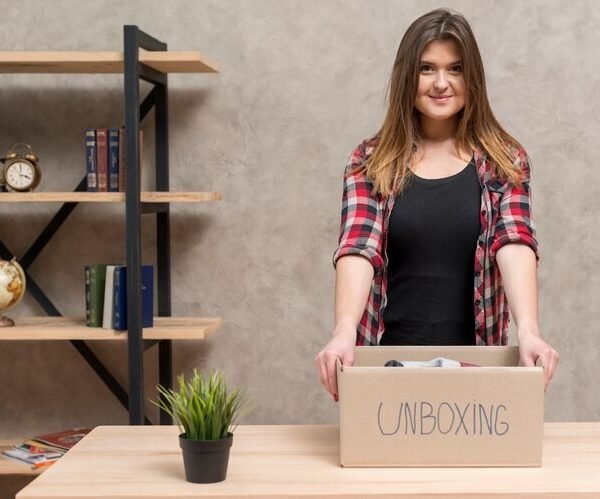What is Minimalism and How to Apply it
Are you feeling overwhelmed by the constant clutter and chaos surrounding you? Do you find yourself drowning in a sea of possessions, struggling to find joy and contentment amidst the material excess? If so, it might be time to embrace the life-changing philosophy of minimalism. This transformative lifestyle isn’t just about getting rid of things; it’s about intentionally promoting the things that bring true value to your life.
Key Takeaways
- Minimalism is a lifestyle that prioritizes simplicity, mindfulness, and intentionality over excessive consumption and material possessions.
- Applying minimalist principles can lead to increased well-being, reduced stress, and a greater focus on what truly matters in life.
- Minimalism extends beyond decluttering physical spaces; it encompasses digital minimalism, mindful consumption, and sustainable living practices.
- Adopting a minimalist approach involves identifying your values, decluttering, and curating a life aligned with your priorities.
Introduction to Minimalism
- What is minimalism, really? Minimalism is a way of life that challenges the notion that more is better. It’s about stripping away the nonessentials and focusing on what truly brings value, meaning, and joy to your existence. At its core, minimalism encourages intentionality – being mindful about the choices you make and the things you allow into your life.
- The benefits of minimalism. By embracing minimalism, you can experience a multitude of benefits. Imagine living in a clutter-free environment that exudes calm and tranquility. Envision having more time and energy to pursue your passions and spend quality time with the people who matter most. Minimalism can also contribute to financial freedom, as you’ll start living with less and spending money on things that truly align with your values and bring lasting fulfillment.
History and Evolution of Minimalism
While the concept of living with fewer possessions has existed for centuries, the modern minimalist movement gained traction in the 1960s. Influenced by the Japanese philosophy of “zen,” artists and designers began exploring the beauty and simplicity of minimalist aesthetics. Over time, minimalism evolved from an artistic movement to a lifestyle philosophy, advocating for intentional living and conscious consumption.
Key figures and movements that have shaped the minimalist lifestyle include
- Joshua Fields Millburn and Ryan Nicodemus, known as “The Minimalists,” who popularized the concept through their blog, books, and documentary.
- Marie Kondo, the author of “The Life-Changing Magic of Tidying Up,” whose KonMari method has inspired millions to declutter and organize their living spaces.
- Tiny House Movement, which promotes downsizing and living in compact, eco-friendly homes.
Minimalist Living Spaces
One of the most visible aspects of minimalism is the pursuit of clutter-free living spaces. Minimalist homes are characterized by clean lines, open spaces, and a focus on functionality over excess. Here are some tips for creating a minimalist living environment.
- Decluttering. Start by going through your belongings and letting go of anything that doesn’t serve a purpose or bring you joy. Use the “one-in, one-out” rule to prevent accumulation of new clutter.
- Simplify and organize. Invest in smart storage solutions and create designated spaces for the items you keep. Embrace the principles of “a place for everything and everything in its place.”
- Embrace minimalist design. Choose furniture and decor pieces that are simple, functional, and avoid unnecessary embellishments. Incorporate natural materials, neutral colors, and clean lines for a calming aesthetic.
Listing Format
Creating a minimalist living space can be a gradual process. Here are five steps to get you started
- Start with the easiest room or area.
- Set a timer and work in short bursts to avoid feeling overwhelmed.
- Use the “four-box” method: keep, donate, trash, and relocate.
- Involve the entire household and make it a collaborative effort.
- Celebrate your progress and enjoy the newfound space and clarity.
Minimalist Wardrobe and Capsule Wardrobes
Your wardrobe is another area where minimalism can have a significant impact. The concept of a capsule wardrobe involves curating a small collection of versatile, high-quality pieces that can be mixed and matched to create a variety of outfits. Here’s how to build a minimalist wardrobe:
- Evaluate your current wardrobe. Try on every item and ask yourself if it fits well, flatters your figure, and aligns with your personal style.
- Identify your essentials. Keep the basics – a few well-fitting jeans, a versatile blazer, a little black dress, and classic tops.
- Invest in quality over quantity. Focus on timeless pieces that can be worn for multiple seasons and occasions.
- Embrace a capsule wardrobe. Limit your wardrobe to a set number of items (e.g., 30-40 pieces) and rotate them seasonally.
- Sustainable fashion choices. Consider eco-friendly and ethical fashion brands that align with minimalist values.
Table Format
Here’s a table showcasing the benefits of a minimalist wardrobe
| Benefit | Description |
|---|---|
| Time-saving | Having a streamlined wardrobe makes getting dressed effortless and reduces decision fatigue. |
| Cost-effective | Investing in quality pieces means you’ll spend less money on trendy, disposable fashion. |
| Eco-friendly | A minimalist wardrobe reduces textile waste and supports sustainable fashion practices. |
| Stress-reducing | Fewer choices and a clutter-free closet can promote a sense of calm and clarity. |
| Versatility | A capsule wardrobe allows you to create multiple outfits from a few key pieces. |
Minimalist Cooking and Recipes
Minimalism extends beyond physical possessions and can be applied to various aspects of life, including the way you approach food and cooking. Minimalist cooking is about embracing simplicity, focusing on whole, nutrient-dense ingredients, and reducing waste.
Here are some principles of minimalist cooking
- Meal planning and grocery lists. Plan your meals in advance and make a grocery list to avoid impulse purchases and food waste.
- Simplify recipes. Look for recipes with minimal ingredients and straightforward instructions. Opt for one-pot or one-pan meals for easy cleanup.
- Embrace seasonal and local produce. Support local farmers and enjoy the freshest, most flavorful ingredients in season.
- Batch cooking and meal prepping. Cook larger portions and freeze or refrigerate leftovers for quick, fuss-free meals throughout the week.
Listing Format
Here are a few easy-to-follow minimalist recipes to get you started
- Roasted veggie bowls with quinoa and a simple vinaigrette.
- Lentil and vegetable soup with a side of crusty bread.
- Grilled salmon with roasted asparagus and lemon slices.
- Overnight oats with fresh berries and a drizzle of honey.
- Zucchini noodles with tomato sauce and grilled chicken.
Digital Minimalism
In today’s digital age, minimalism isn’t just about physical possessions; it’s also about curating our virtual spaces and managing our technology use. Digital minimalism is the practice of intentionally moderating digital information consumption and prioritizing real-world experiences over virtual ones.
Here are some tips for embracing digital minimalism
- Reduce digital clutter. Unsubscribe from unnecessary emails, delete unused apps, and organize your digital files.
- Limit social media use. Set boundaries and schedules for checking social media platforms to reduce mindless scrolling and distractions.
- Embrace intentional communication. Choose face-to-face or voice conversations over text-based communication whenever possible.
- Practice digital detoxes. Designate specific times or days to unplug from technology and reconnect with the present moment.
- Curate your online content. Evaluate the websites, podcasts, and accounts you follow, and remove those that no longer serve you.
Applying Minimalism in Daily Life
Minimalism is a mindset and a way of living that can be applied to various aspects of your daily routine and decision-making processes. By embracing minimalist principles, you can cultivate a greater sense of focus, clarity, and intentionality in your life.
- Prioritize experiences over possessions. Shift your focus from accumulating material goods to investing in experiences that enrich your life, such as travel, learning new skills, or spending quality time with loved ones.
- Practice mindfulness. Minimalism encourages mindfulness – being present in the moment and appreciating the simple pleasures in life. Incorporate mindfulness practices like meditation, deep breathing exercises, or simply taking a few moments to pause and be fully present.
- Simplify your schedule. Evaluate your commitments and activities, and eliminate those that no longer align with your values or contribute to your well-being. Learn to say “no” to requests that don’t serve you, and create more space for the things that truly matter.
- Embrace intentional consumption. Before making a purchase, ask yourself if it aligns with your values, if you truly need it, and if it will bring lasting value to your life. Adopt a more conscious and mindful approach to consuming goods and services.
- Cultivate gratitude. Minimalism can help you appreciate the things you already have, rather than constantly seeking more. Practice gratitude by keeping a journal, expressing appreciation to loved ones, or simply taking a moment to reflect on the blessings in your life.
By applying these principles consistently, you’ll find that minimalism becomes more than just a decluttering exercise – it becomes a way of life that fosters clarity, contentment, and a deeper connection with what truly matters.
Minimalism and Sustainability
Minimalism and sustainability are intrinsically linked, as they both promote conscious consumption and a mindful approach to our impact on the planet. By embracing minimalism, you can actively contribute to environmental conservation and reduce your ecological footprint.
- Reduce waste and overconsumption. One of the core tenets of minimalism is consuming less and being mindful of the resources you use. This aligns perfectly with sustainable living practices, as it minimizes waste and reduces the demand for new products and resources.
- Support ethical and eco-friendly brands. When you do need to make purchases, prioritize brands that align with your minimalist and sustainable values. Look for companies that use sustainable materials, employ ethical production practices, and minimize their environmental impact.
- Embrace a sharing economy. Minimalism encourages sharing resources and access over individual ownership. Participate in sharing platforms for goods, services, and living spaces to reduce waste and maximize resource utilization.
- Declutter and responsibly dispose of items. As you declutter your living spaces, make sure to responsibly dispose of or donate items you no longer need. This prevents waste from ending up in landfills and allows others to benefit from your gently used possessions.
- Adopt a minimalist mindset towards consumption. Ultimately, minimalism encourages mindful consumption and intentionality in our choices. By adopting this mindset, you’ll naturally gravitate towards more sustainable options and reduce your overall consumption, which directly contributes to environmental conservation.
Personal Stories and Testimonials
While the principles of minimalism may seem straightforward, embracing this lifestyle can be a transformative journey filled with challenges and triumphs. Hearing from individuals who have experienced the benefits of minimalism firsthand can provide inspiration and practical insights.
Alex’s Story: “I used to be a self-proclaimed shopaholic, constantly accumulating clothes, gadgets, and home decor items without a second thought. It wasn’t until my closets and storage spaces were overflowing that I realized the weight of my possessions was holding me back. Stumbling upon minimalism was a revelation – it taught me to let go of the things that didn’t serve me and focus on what truly mattered. The decluttering process was emotional but liberating. Now, with a streamlined wardrobe and a clutter-free home, I have more time, energy, and money to invest in experiences that enrich my life.”
Sarah’s Minimalist Journey: “As a busy working mom, I constantly felt overwhelmed by the never-ending cycle of cleaning, organizing, and maintaining our household. That’s when I discovered minimalism. By embracing a minimalist lifestyle, I was able to declutter our living spaces and eliminate the excess that was draining my time and energy. Now, with fewer possessions and a more streamlined routine, I have more quality time to spend with my family, pursue my hobbies, and focus on what truly matters.”
Tim’s Transformation: “I used to define myself by my career and the material possessions I accumulated. But as I climbed the corporate ladder, I found myself feeling increasingly unfulfilled and disconnected from what truly brought me joy. Minimalism helped me reassess my priorities and let go of the things that were weighing me down, both physically and emotionally. Today, I live a more intentional life, focusing on experiences, relationships, and personal growth rather than constantly chasing after the next promotion or material goal.”
These personal stories highlight the transformative power of minimalism and how it can positively impact various aspects of one’s life, from decluttering physical spaces to redefining priorities and finding greater fulfillment.
Conclusion
Minimalism is more than just a decluttering trend; it’s a life philosophy that encourages intentionality, mindfulness, and a focus on what truly matters. By embracing the principles of minimalism, you can cultivate a sense of clarity, contentment, and freedom from the burdens of excessive consumption and material possessions.
As you embark on your minimalist journey, remember that it’s a process of continuous refinement and self-discovery. Start by identifying your values and priorities, and let them guide your decisions about what to keep and what to let go of. Declutter your physical spaces, curate a minimalist wardrobe, and simplify your digital life. But don’t stop there – extend minimalist principles to your daily routines, consumption habits, and relationships.
Minimalism is a tool that can help you create a life aligned with your authentic self, free from the distractions and burdens of excess. It’s a journey towards greater well-being, sustainability, and a deeper appreciation for the simple pleasures in life.











